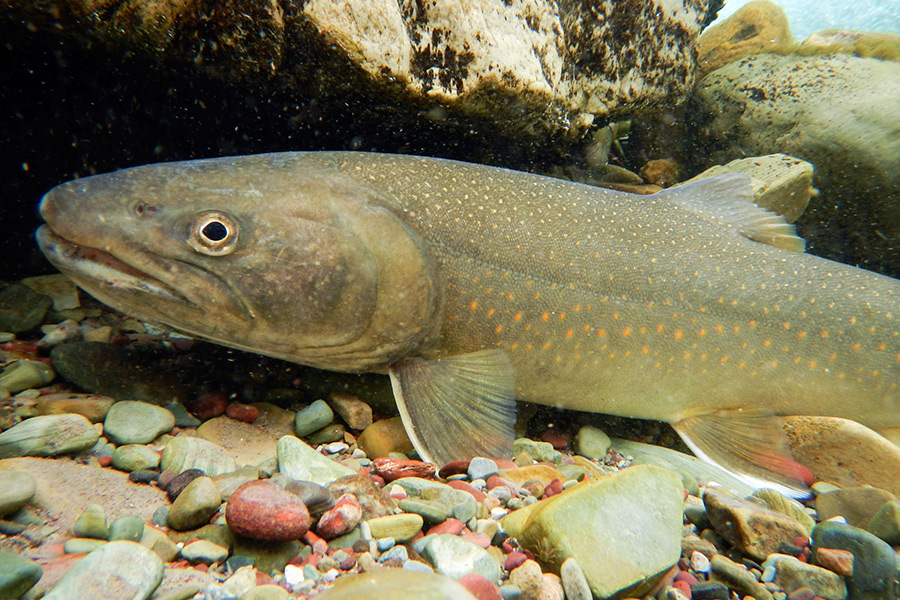A pair of environmental groups on April 19 filed a lawsuit against the federal government alleging that the U.S. Fish and Wildlife Service’s plan to recover threatened bull trout is inadequate and violates the Endangered Species Act.
The groups, Alliance for the Wild Rockies and Friends of the Wild Swan, challenged the agency’s final recovery plan in U.S. District Court in Oregon, saying that it “fails to ensure the long-term survival and recovery.”
Bull trout were listed under the Endangered Species Act as “threatened” in 1999, and the FWS’ plan to recover the species is more than 15 years in the making.
The plan, finalized last September, immediately drew criticism from conservation groups who for two decades have been at the vanguard of legal challenges on the road toward bull trout recovery.
Michael Garrity, executive director of Alliance for the Wild Rockies, said bull trout lost an estimated 60 percent of their historic habitat range prior to the species’ listing, mostly due to human-caused impacts such as habitat degradation and fragmentation due to roads, culverts and dams, poor water quality, the introduction of nonnative species that outcompete the bull trout, and climate change, which is increasingly compromising the cold-water habitat the species requires for survival.
Without litigation, Garrity said, the native species would be in even hotter water.
“The U.S. Fish and Wildlife Service has dragged its feet on bull trout for over 20 years now and the sad truth is that the only actions the agency has taken to keep these iconic native fish from going extinct are those the court has mandated due to lawsuits by conservationists over the decades,” Garrity said in a statement.
A spokesperson with FWS said the agency wouldn’t comment on pending litigation, but biologists with the federal agency have defended the plan as realistic given the challenges presented by climate change, many of which will be difficult to mitigate.
A central sticking point in the FWS’ recovery plan is its departure from other recovery plans in that it does not rely on target numbers of adult bull trout as a barometer of success, raising concerns that the barometer for “recovery” is too broad.
Instead, the plan focuses on alleviating specific threats to the species’ habitat and genetic diversity, while accepting that as much as 25 percent of the trout populations will face extirpation in the face of climate change.
“This plan allows bull trout populations to decline even further and doesn’t address the looming threat of climate change,” said Arlene Montgomery, program director for Friends of the Wild Swan. “Our detailed comments that included relevant science and threats facing bull trout were ignored and the Service is continuing on a path that will lead to less fish than when they were listed. That’s not recovery.”
Garrity said the federal agency’s omission of population criteria is among the plan’s most glaring deficiencies.
“They’re essentially redefining recovery so they can list bull trout as recovered,” Garrity said. “They’ve lowered the bar so much with this plan that there is no way they can’t achieve recovery. They redefined recovery to essentially mean extinction.”
The ultimate goal of the ESA is to remove a species from the list, but a recovery plan must first be in place to ensure that once the measure’s protective umbrella is removed, management requirements are in place so that the species will not again become imperiled.
The proposed plan’s overall strategy calls for widespread population distribution throughout six geographical areas in the Northwest, and would achieve that by minimizing threats from non-native fish, such as invasive lake trout, improving bull trout habitat and continuing to study the species in order to identify other stressors.
